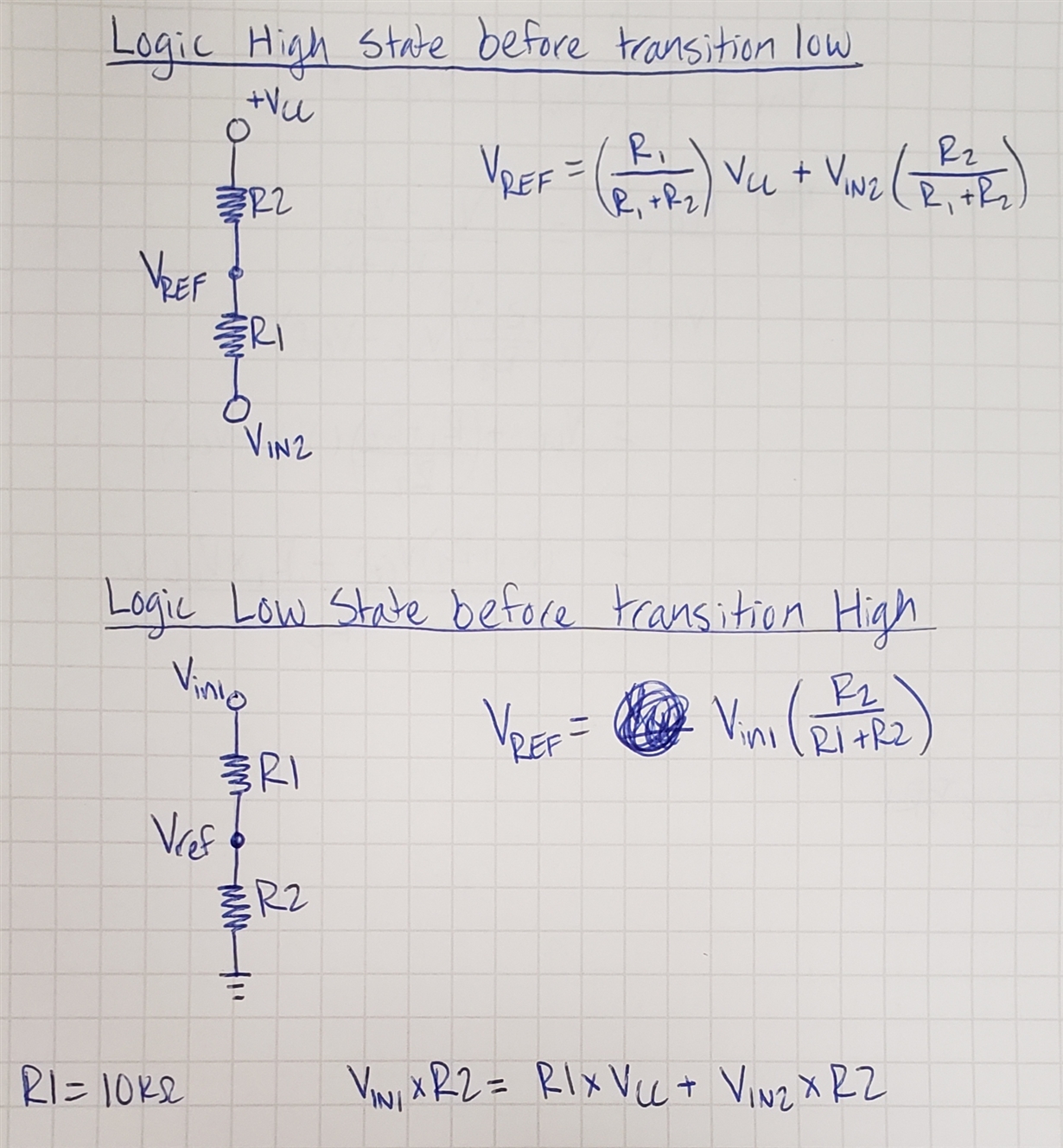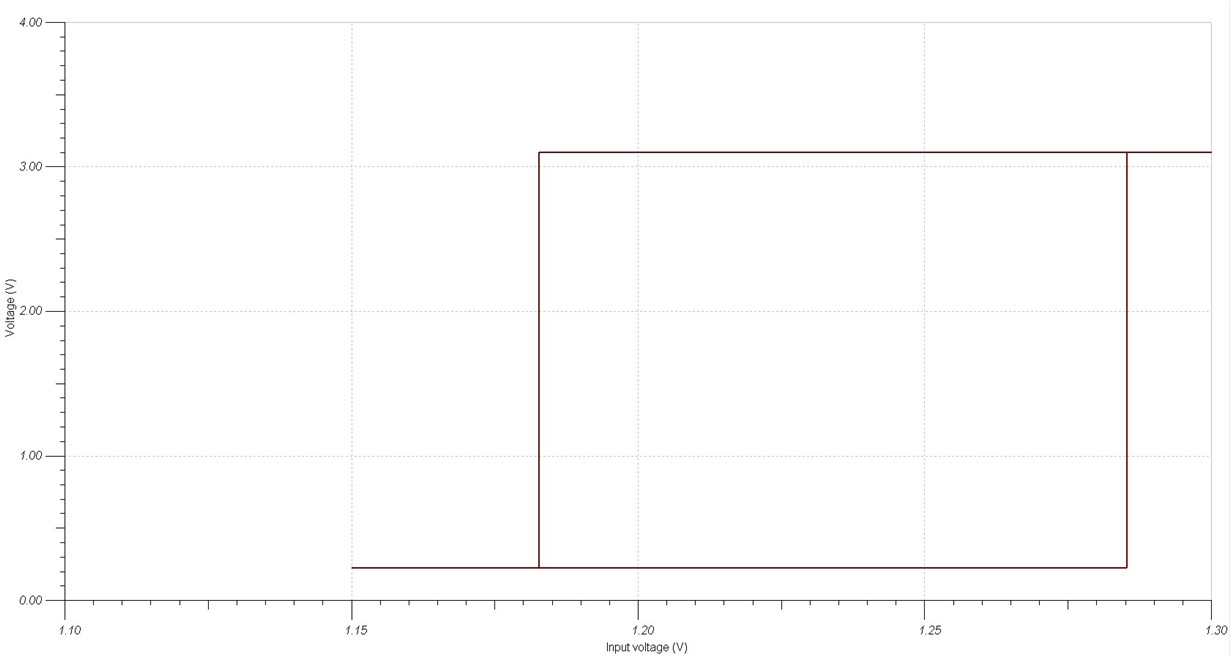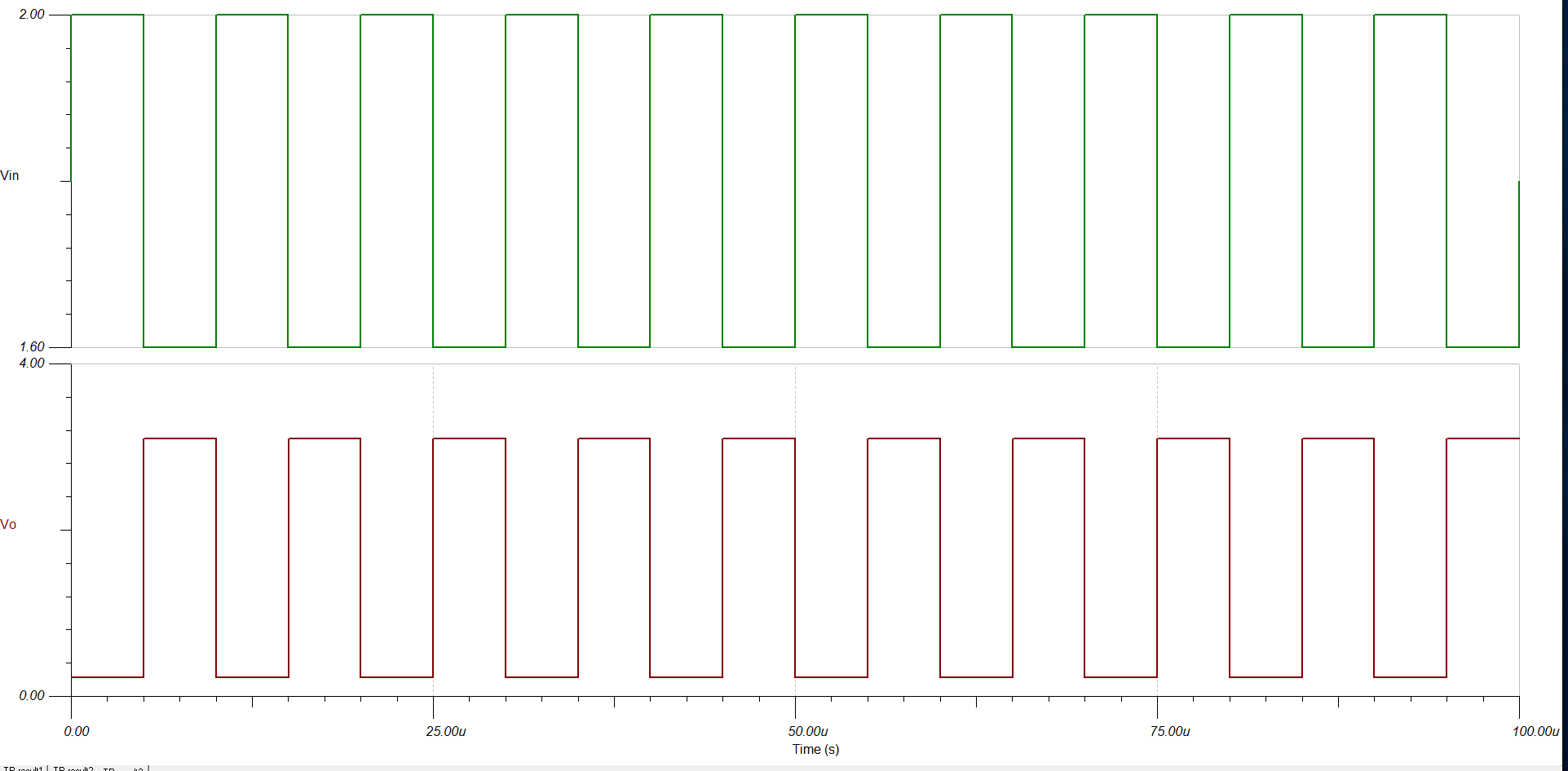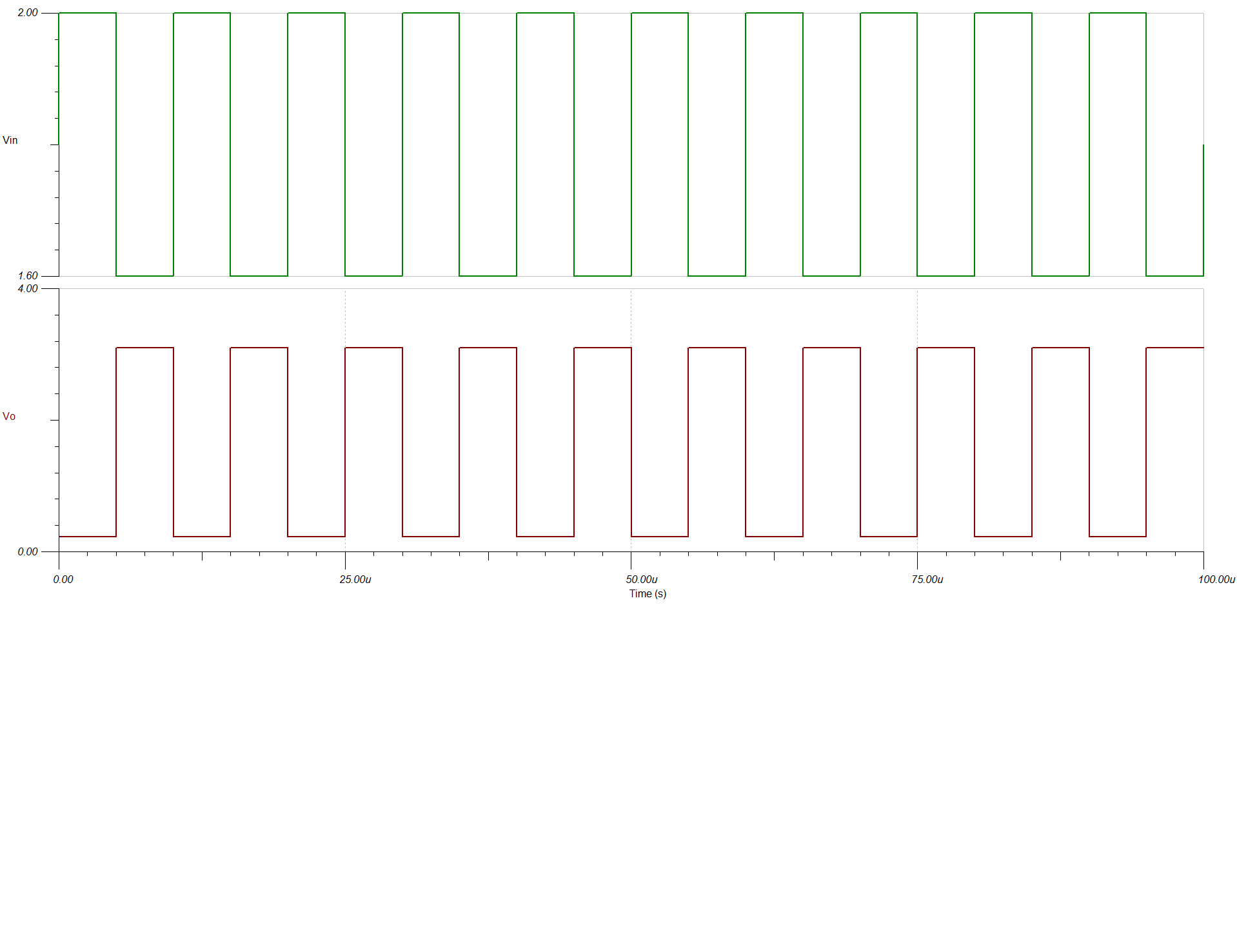Other Parts Discussed in Thread: LM7332, TLV7011
Hi Team,
I tried to design a non-inverting comparator using TLV7031. My Vh is 3V and Vl is 2.4V and Hysteresis is 600mv.
Let me explain how I approach the problem. From the datasheet, Hysteresis is given in equation no (6). I know my hysteresis so I fixed R1 and I found R2.
Put this value of R1 and R2 in eq (4) to find my Vref. May I know the approach is correct or not.
According to my simulation results are not proper .
http://www.ti.com/lit/ds/symlink/tlv7031.pdfNPM.TSCPlease find the attached simulation file.
Regards
Hari






